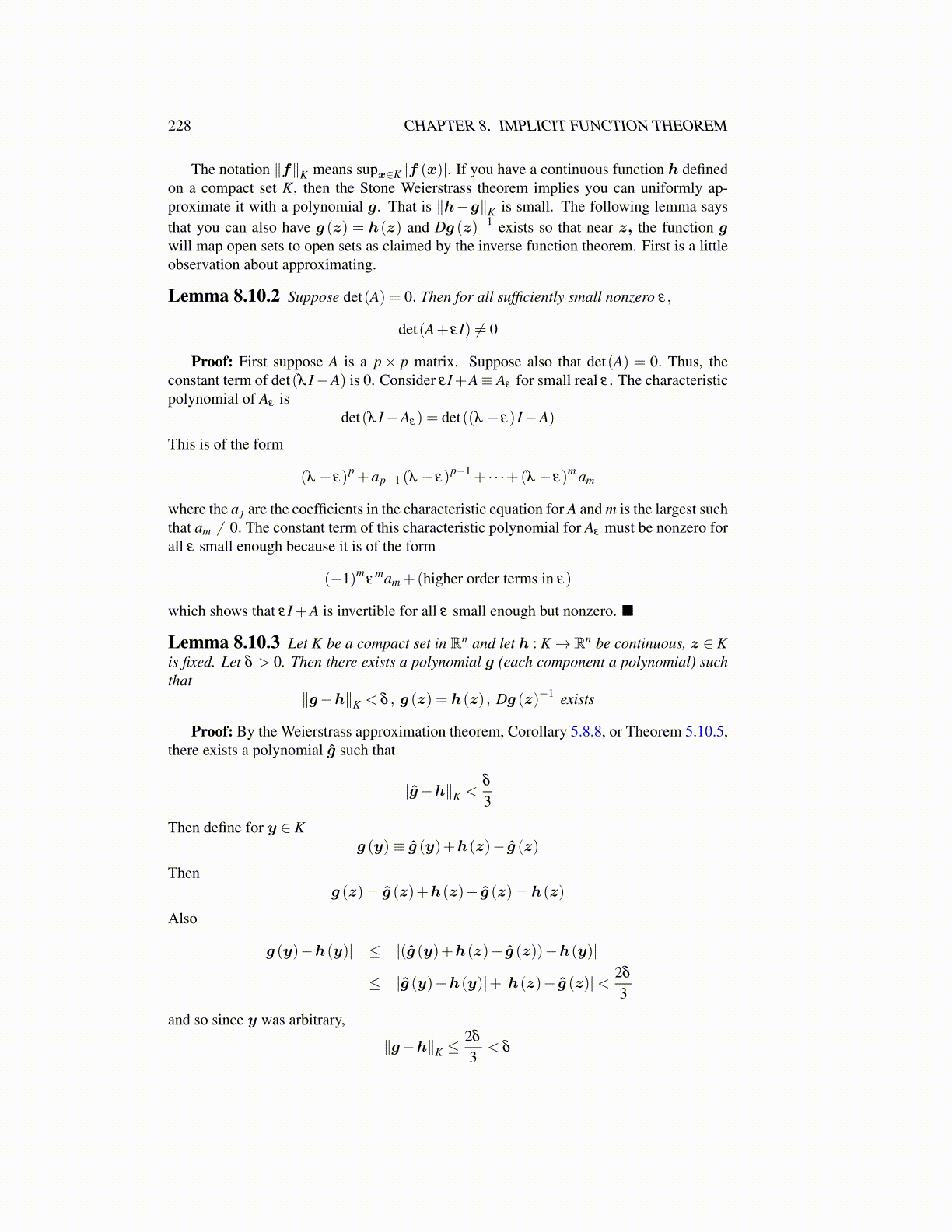
228 CHAPTER 8. IMPLICIT FUNCTION THEOREM
The notation ∥f∥K means supx∈K |f (x)|. If you have a continuous function h definedon a compact set K, then the Stone Weierstrass theorem implies you can uniformly ap-proximate it with a polynomial g. That is ∥h−g∥K is small. The following lemma saysthat you can also have g (z) = h(z) and Dg (z)−1 exists so that near z, the function gwill map open sets to open sets as claimed by the inverse function theorem. First is a littleobservation about approximating.
Lemma 8.10.2 Suppose det(A) = 0. Then for all sufficiently small nonzero ε,
det(A+ εI) ̸= 0
Proof: First suppose A is a p× p matrix. Suppose also that det(A) = 0. Thus, theconstant term of det(λ I−A) is 0. Consider εI+A≡ Aε for small real ε . The characteristicpolynomial of Aε is
det(λ I−Aε) = det((λ − ε) I−A)
This is of the form
(λ − ε)p +ap−1 (λ − ε)p−1 + · · ·+(λ − ε)m am
where the a j are the coefficients in the characteristic equation for A and m is the largest suchthat am ̸= 0. The constant term of this characteristic polynomial for Aε must be nonzero forall ε small enough because it is of the form
(−1)mε
mam +(higher order terms in ε)
which shows that εI +A is invertible for all ε small enough but nonzero. ■
Lemma 8.10.3 Let K be a compact set in Rn and let h : K→ Rn be continuous, z ∈ Kis fixed. Let δ > 0. Then there exists a polynomial g (each component a polynomial) suchthat
∥g−h∥K < δ , g (z) = h(z) , Dg (z)−1 exists
Proof: By the Weierstrass approximation theorem, Corollary 5.8.8, or Theorem 5.10.5,there exists a polynomial ĝ such that
∥ĝ−h∥K <δ
3
Then define for y ∈ Kg (y)≡ ĝ (y)+h(z)− ĝ (z)
Theng (z) = ĝ (z)+h(z)− ĝ (z) = h(z)
Also
|g (y)−h(y)| ≤ |(ĝ (y)+h(z)− ĝ (z))−h(y)|
≤ |ĝ (y)−h(y)|+ |h(z)− ĝ (z)|< 2δ
3
and so since y was arbitrary,
∥g−h∥K ≤2δ
3< δ